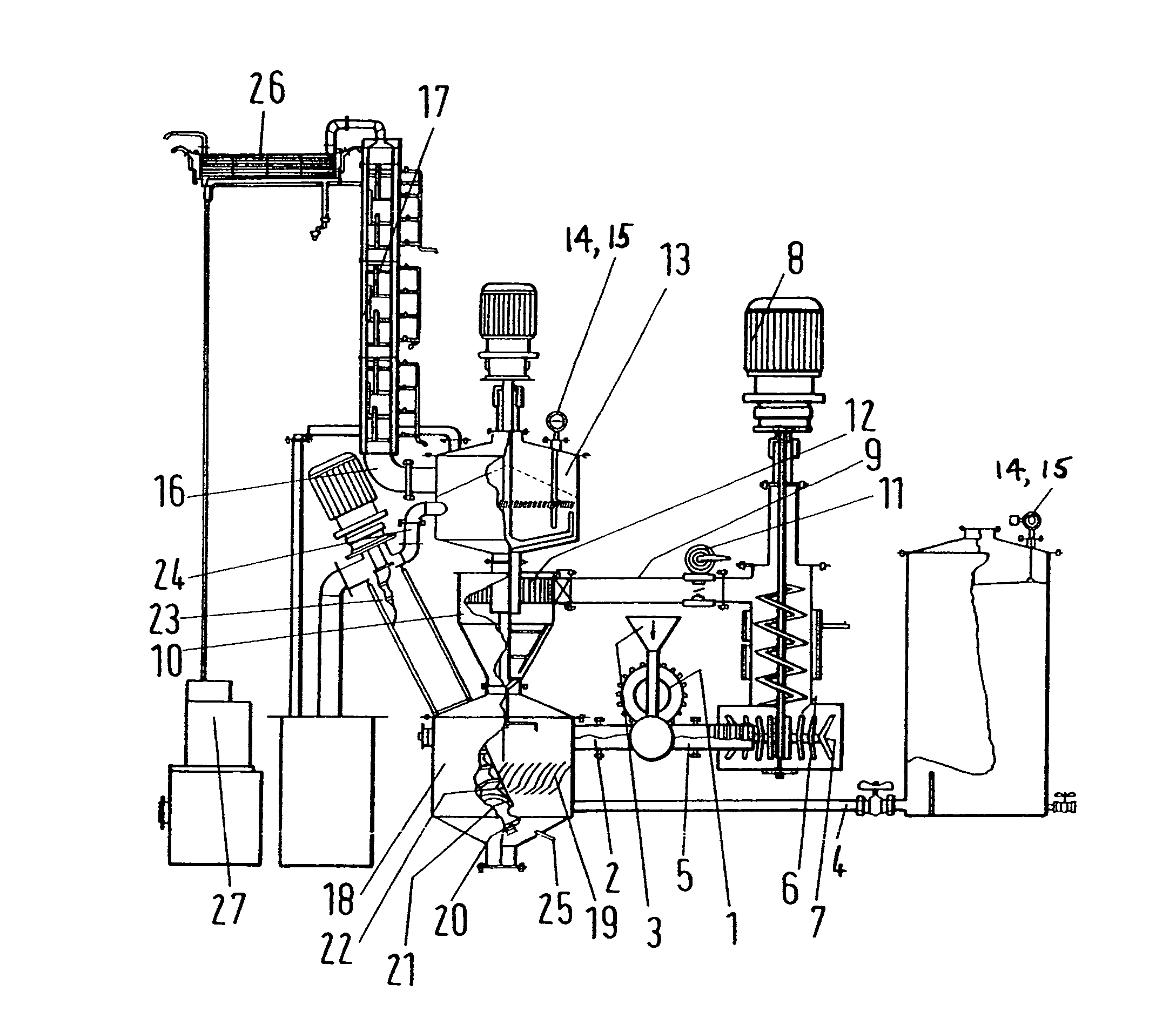Diesel oil from residues by catalytic depolymerization with energy input from a pump-agitator system
a technology of catalytic depolymerization and pump agitator, which is applied in the direction of physical/chemical process catalysts, fluid frictions for heating, domestic stoves or ranges, etc., and can solve the problems of reaction to a standstill, high energy consumption, and high energy consumption
- Summary
- Abstract
- Description
- Claims
- Application Information
AI Technical Summary
Benefits of technology
Problems solved by technology
Method used
Image
Examples
Embodiment Construction
[0014]Referring to the FIGURE, the pump 1 has a suction side 2 provided with a feed hopper 3 and a connection to the circulating oil line 4. A pressure line 5 on the output side of the pump leads tangentially into the agitation tank 6. An agitator 7, driven by the electric motor 8 and rotating in the direction opposite the tangential arrival of the feedstock, is provided in the tank 6. The agitator 7 is also provided with upward-pointing cleaning arms, which pass over the entire surface of the agitation tank.
[0015]The agitation tank 6 is connected by a connecting pipeline 9 to a hydrocyclone 10. An automatic control valve 11, which regulates the pressure in the downstream apparatus, is installed in this connecting pipeline. In a special embodiment, an additional pump is provided in this line; this pump is controlled as a function of pressure by way of a frequency converter along with the pump 1. The hydrocyclone 10 has in its interior a venturi nozzle 12 resting against the inside w...
PUM
| Property | Measurement | Unit |
|---|---|---|
| temperatures | aaaaa | aaaaa |
| temperature | aaaaa | aaaaa |
| temperature | aaaaa | aaaaa |
Abstract
Description
Claims
Application Information
 Login to View More
Login to View More - R&D
- Intellectual Property
- Life Sciences
- Materials
- Tech Scout
- Unparalleled Data Quality
- Higher Quality Content
- 60% Fewer Hallucinations
Browse by: Latest US Patents, China's latest patents, Technical Efficacy Thesaurus, Application Domain, Technology Topic, Popular Technical Reports.
© 2025 PatSnap. All rights reserved.Legal|Privacy policy|Modern Slavery Act Transparency Statement|Sitemap|About US| Contact US: help@patsnap.com


